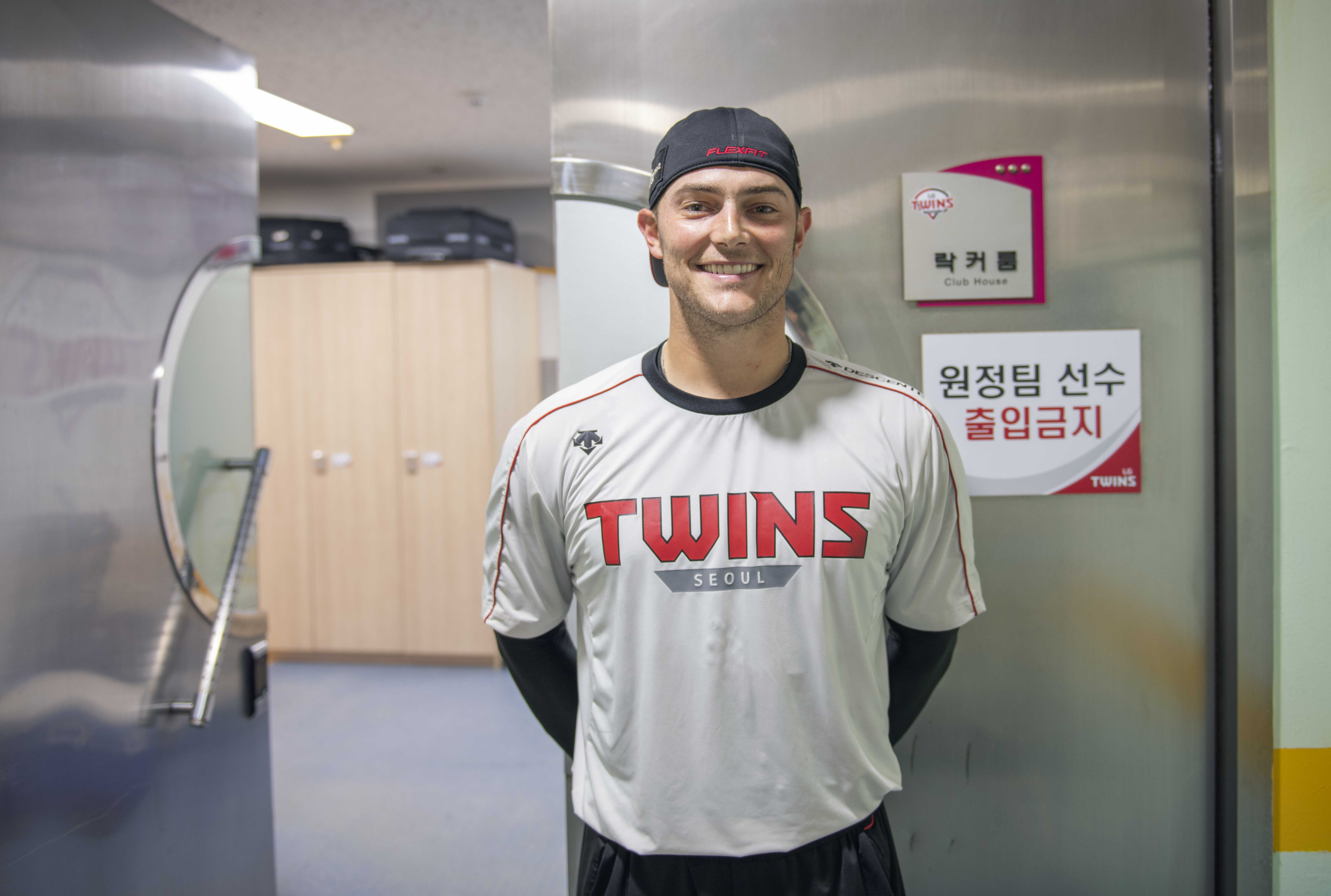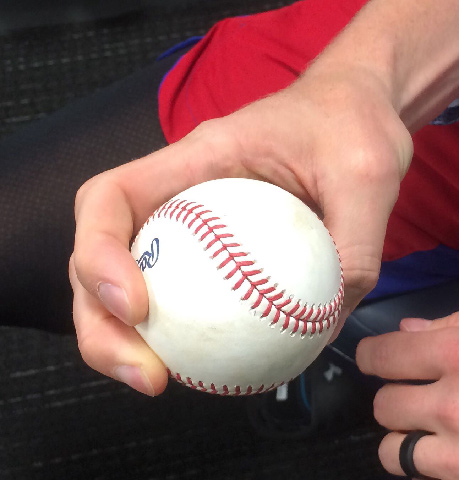
Last week, I sat down with four of the foreign-born players in the Korea Baseball Organization (KBO) to discuss their experiences playing in Korea.
Right-handed pitcher Josh Lindblom of the Doosan Bears is the true veteran among all the foreign-born players in the KBO. He started his KBO career with the Lotte Giants in 2015, where he played until 2016, before taking a detour to the States to play for the Pirates in 2017; he returned to Lotte in the second half of that year. In 2018, he signed with the Bears and has been the ace of their staff. This season, Lindblom is the league’s top pitcher: he’s 13-1 with a 1.89 ERA and a 3.09 FIP in 119.0 IP with 112 strikeouts and 18 walks. His 5.38 WAR leads the KBO.
Infielder and designated hitter Jamie Romak of the SK Wyverns was acquired during the 2017 season as a replacement for Danny Worth. Since coming over to Korea, Romak has been one of the most prolific home run hitters in the league, belting 94 out of the park while boasting a career .562 slugging percentage. He’s currently tied for first in home runs (20) while hitting a healthy .276/.366/.517, good for a 136.6 wRC+ on the season.
Right-handed pitcher Tyler Wilson is a former Baltimore Oriole who signed with the LG Twins for the 2018 season and settled in nicely as their staff ace. His strong campaign that year (9-4, 3.07 ERA in 170.0 IP with a 6.33 WAR) earned him another contract with the Twins. This season, Wilson is currently fourth in ERA (2.62) and seventh in WAR (2.85) among all pitchers while headlining the LG Twins rotation that has led the team to fourth place in the 10-team league.
Left-handed pitcher Chad Bell of the Hanwha Eagles is new to the KBO this season. Bell was signed along with fellow former Detroit Tiger Warwick Saupold to be the Eagles’ new rotation arms. Through 18 starts in the KBO, Bell is 5-9 with a 4.00 ERA and 78 strikeouts to 43 walks in 108.0 IP.
What were your first impressions after arriving in Korea?
Lindblom: When I first signed here, I didn’t know what to expect. I never had any reason to come to Asia at all. My expectation, to be honest, was kind of low. Just having a western mindset, you think that America is the best and when you get here, you realize that things that are different can be good too. It was good, but in a different way. You can’t really compare Asia to America. It’s like comparing an apple to an airplane.
Romak: My exact first impression was coming across the bridge from the Incheon International Airport into the Songdo area, which is where we live. It was nighttime, all the big buildings were lit up and it was very exciting. It was very cool. And of course, I was looking forward to the opportunity.
Wilson: We play in Seoul so it’s a huge city. I grew up in a small town in Virginia. I’ve lived in Virginia my whole life, so to see a big city like Seoul and get used to living here was an adjustment. There’s a lot of people, obviously. Different language. So just getting used to things I hadn’t seen before and routines I hadn’t partaken in before, like taking the subway every day to work, there were just a lot of different adjustments to the lifestyle.
Bell: The first thing that took over for me, on the baseball side of things, was the fans’ passion for the game. You just don’t see that everywhere. In this season’s first series – versus the Doosan Bears – when you look at Jamsil Stadium, and the place is split right down the middle between Doosan and Hanwha fans, and everybody’s going insane for nine innings. It was unreal. Off the field, the main differences were cultural ones. Food, communication, etc., stuff like that. Some places it’s easier and some places it’s harder. You just have to get used to it. On the baseball field, you’re playing baseball. I have to use a translator to communicate with people, but in the end, it’s the same game but the atmosphere is electric. Read the rest of this entry »

![]() iTunes Feed (Please rate and review us!)
iTunes Feed (Please rate and review us!)![]() Sponsor Us on Patreon
Sponsor Us on Patreon![]() Facebook Group
Facebook Group![]() Effectively Wild Wiki
Effectively Wild Wiki![]() Twitter Account
Twitter Account![]() Get Our Merch!
Get Our Merch!![]() Email Us: podcast@fangraphs.com
Email Us: podcast@fangraphs.com



